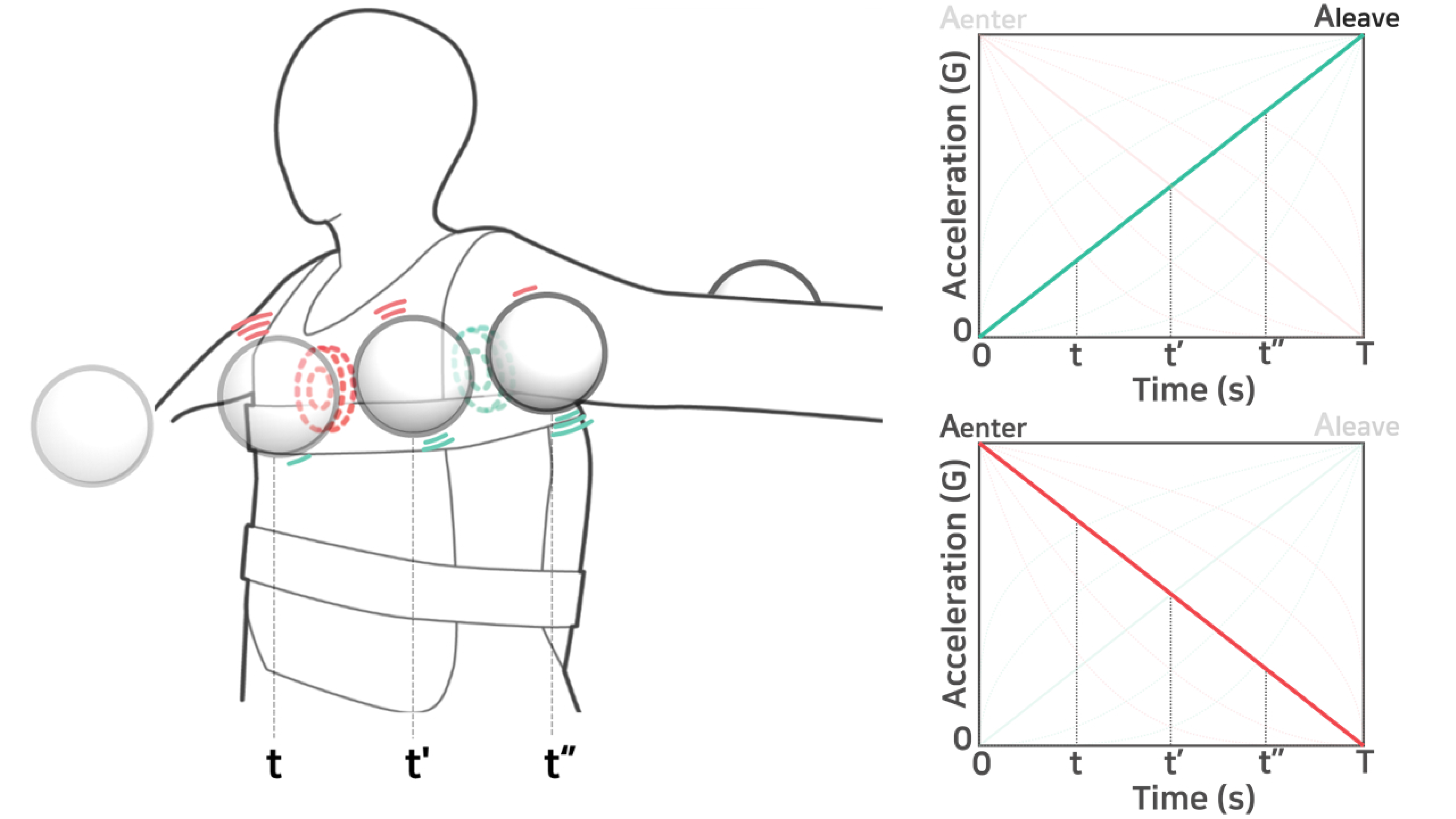Penetrating Tactile Illusion
Body-Penetrating Tactile Phantom Sensations
(ACM CHI 2020)

Abstract
In tactile interaction, a phantom sensation refers to an illusion felt on the skin between two distant points at which vibrations are applied. It can improve the perceptual spatial resolution of tactile stimulation with a few tactors. All phantom sensations reported in the literature act on the skin or out of the body, but no such reports exist for those eliciting sensations penetrating the body.
This paper addresses tactile phantom sensations in which two vibration actuators on the dorsal and palmar sides of the hand present an illusion of vibration passing through the hand. We also demonstrate similar tactile illusions for the torso. For optimal design, we conducted user studies while varying vibration frequency, envelope function, stimulus duration, and penetrating direction. Based on the results, we present design guidelines on penetrating phantom sensations for its use in immersive virtual reality applications.
Publication
- ACM CHI 2020 (Co-first Author)
Jinsoo Kim*, Seungjae Oh*, Chaeyong Park, and Seungmoon Choi.
Body-Penetrating Tactile Phantom Sensations - Video: Overall
Figure
 Schematic description of vibrotactile displays for hand (left) and torso (right).
Schematic description of vibrotactile displays for hand (left) and torso (right).
 Scatter plot for DIRECTION CLARITY vs. PENETRATION for each Body Site (rows) and Vibration Frequency (columns).
Scatter plot for DIRECTION CLARITY vs. PENETRATION for each Body Site (rows) and Vibration Frequency (columns).
Conclusion
We have explored the presentation of simulated tactile sensation appropriate for a virtual object passing through part of the human body. To elicit such a moving illusory sensation, vibrotactile phantom sensation is exploited. Through a series of perceptual experiments, we extensively investigated the parameters of phantom sensation that stimulates the hand and torso as if the tactile sensation penetrated the body site. Our empirical findings from the experiments can improve the quality of tactile rendering by providing ways to render more expressive tactile sensations. Future work may also consider comparison with other tactile modalities, e.g., thermal, or a combination with other modalities, e.g., vibro-thermal and vibro-auditory. Finally, we will further study the effectiveness of rendering passing-through illusions when a user conducts bare-hand manual tasks, e.g., finding an object of interest in mid-air and rendering the virtual ends of a motion tracking space.
Contribution
- Seungjae Oh: Idea, Writing, Implementation (HW), Experimental Design & Analysis, and Graphics
- Jinsoo Kim: Implementation (HW&SW), Experimental Design, Experiment, and Graphics
- Chaeyong Park: Implementation (HW) and Video
- Seungmoon Choi: Director